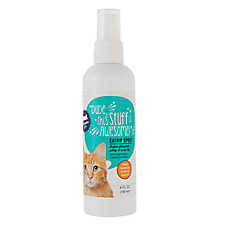Why Cats Go Crazy for Catnip

When your cat needs a special treat, a little comfort or a bit of excitement, it might be time to pull out the catnip. This leafy green plant – a member of the mint family – has a marvelous and often hilarious effect on many cats. Sniffing dried catnip or catnip oil may send your kitty into 10 or 15 minutes of euphoria, while eating a bit of catnip can cause your cat to blissfully zone out for an hour or two. So, what exactly is a catnip plant, and how does it work its magic?
What catnip does for cats
The catnip plant, or Nepeta cataria, is a leafy green herb that’s one of 250 plants in the mint family. Cats of all sizes – from house cats to lions and tigers – love catnip because it contains nepetalactone, an oil within the plant’s leaves. When a kitty gets a whiff of this essential oil, the scent stimulates the olfactory bulb in the brain, triggering the amygdala and pituitary gland and causing a brief “high.” During this time, cats may become extra affectionate, slightly silly, or highly active, zooming around the room like maniacs. After 10 or 15 minutes of intense reactions, cats become temporarily immune to the effects of this plant for 30 minutes or more. After the initial high – or if catnip is ingested rather than smelled – cats typically become sleepy and sedate for an hour or two.
Not all cats have the same response to catnip. Only 50% to 70% of cats have strong reactions, and some cats seem unaffected or indifferent to it. Others may become a little aggressive. Interestingly, kittens seem to be unaffected by catnip until they are about six months or older and are reaching sexual maturity.
How to use catnip safely
Catnip is quite safe for our feline friends to enjoy in moderation. Eating too much catnip at once may cause vomiting, diarrhea or dizziness. However, most cats stop eating once they’ve had enough and are unlikely to become sick. Cats who enjoy catnip more often may build up a tolerance that reduces its effects, so using it as a special treat is probably the best way to let your cat enjoy it.
How to enjoy and use catnip
Your kitty can enjoy catnip in several forms. Fresh catnip from your own catnip plant is a fun, edible treat. You can also purchase dried catnip, catnip sprays and toys stuffed with catnip.
Behavior training: A little catnip sprinkled or sprayed on a scratching post can make this furniture more attractive to your kitty than your new sofa.
Sedation: For cats that have a positive reaction to catnip, the sedation properties of the plant can help relieve anxiety around separation, car trips or visits to the vet.
Exercise: Catnip toys can be a great way to help cats stay active.
Digestion: For some cats, catnip can serve as a digestive aid to treat constipation or an upset stomach.
FAQs
Why do cats like catnip?
The oil in the leaves of catnip produces a brief high in many cats, causing them to become happy, euphoric, affectionate or sedate.
Can cats have too much catnip?
Ingesting too much catnip can cause vomiting, diarrhea and dizziness in cats. This is uncommon, however, since the effects and the attractiveness of catnip wear off after 10 to 15 minutes. However, it’s best to limit a cat’s exposure to catnip to no more than once a week.
Can kittens have catnip?
While catnip is safe for kittens, the plant typically doesn’t cause a reaction until a cat has reached 6 to 12 months of age.
How often can I give my cat catnip?
There are no official guidelines for how often you treat your cat to catnip. However, many veterinarians recommend using it only occasionally – once a week or less often.
What is catnip used for?
Catnip makes a great treat for kitties, but it can also be used as a training tool to encourage cats to dig their nails into a catnip-covered scratching post rather than an expensive sofa or upholstered chair.
Is catnip safe for humans?
Catnip is considered generally safe for humans. Some people use catnip leaves for tea, and the elements of the catnip plant are used in some natural insect repellent. However, catnip may not be safe for pregnant women, as there is some evidence that the plant can stimulate the uterus which may increase the risk of a miscarriage.
What if my cat doesn’t react to catnip?
If your cat doesn’t respond to catnip, you might try one of several other plants that are known to have similar effects. These include silver vine (Actinidia polygama), Tatarian honeysuckle (Lonicera tatarica) and Valerian root (Valeriana officinalis).
PetSmart’s catnip products come in dried, sprays and chewable forms, as well as swat-and-pounce toys and hunt-and-stalk toys. Shop for catnip online or use convenient shopping with Curbside Pickup or in-store pickup. Need something today? We have select items available for Same-Day Delivery in most areas powered by DoorDash. For items you purchase frequently, PetSmart has Autoship that automatically delivers the items you want to your door as often as you’d like. Check the website to see which items are eligible.
Information in this article is not intended to diagnose, treat or cure your pet and is not a substitute for veterinary care provided by a licensed veterinarian. For any medical or health-related advice concerning the care and treatment of your pet, contact your veterinarian.





